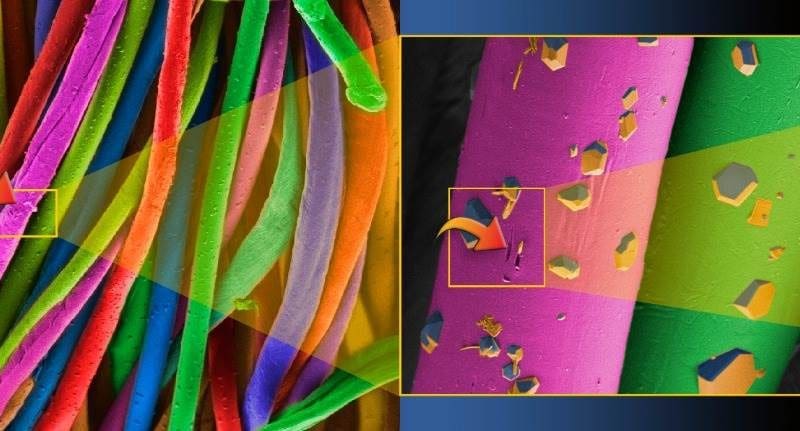Researchers Develop Fabric Capable Of Eliminating SARS-CoV-2 By Contact
The company Nanox, with the support of the FAPESP programme “Innovative Research in Small Enterprises” (PIPE) in Brazil, has developed a fabric with silver microparticles on its surface capable of inactivating the SARS-CoV-2 virus in laboratory tests, where this material eliminated 99.9% of the virus after two minutes of contact.
The material has been developed by researchers from the Institute of Biomedical Sciences of the University of São Paulo (ICB-USP), the Laboratory of Theoretical and Computational Chemistry of the Universitat Jaume I of Castelló (Spain), and the Center for the Development of Functional Materials (CDMF) with the support of the São Paulo Research Foundation (FAPESP).
The fabric is made up of a mixture of polyester and cotton (polycotton) and contains two types of silver microparticles impregnated on its surface through an immersion, drying and fixing process. Nanox has already registered its patent application. Luiz Gustavo Pagotto Simões, company director, explains that “we have established agreements with companies and factories in the textile, plastic and polymer sectors that will use this material for producing and marketing protective masks and hospital clothing”.
A few months ago, CDMF researchers, in collaboration with a team from the UJI coordinated by Professor Juan Andrés Bort of the Department of Physical and Analytical Chemistry at the UJI, began a series of tests to evaluate the use of silver nanoparticles against coronavirus, in view of evidence found in scientific literature about their possible effectiveness against other types of precedent viruses. On this occasion, the company has partnered with ICB-USP researchers, who had isolated and cultured in laboratory SARS-CoV-2 samples obtained from the first two Brazilian patients diagnosed with this disease.
The results of the analyses show that fabric samples with different silver microparticles embedded in the surface inactivated 99.9% of the virus after two and five minutes of contact. In addition to the tests developed to evaluate its antiviral, antimicrobial and fungicidal activity, the fabric has also been tested for eliminating the risk of causing dermatological problems.

